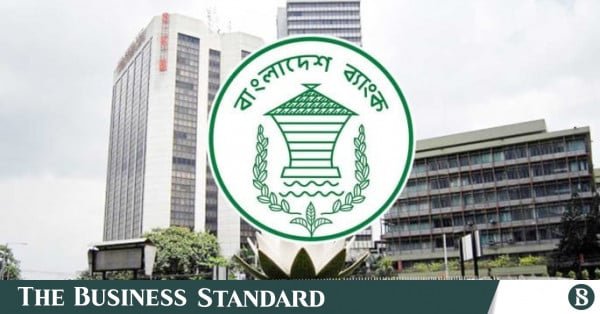At the end of June, total lending in this sector stood at Tk1.41 lakh crore, down from Tk1.49 lakh crore in the March quarter – a decline of 5.8%
File photo of Bangladesh Bank/BSS
“>

File photo of Bangladesh Bank/BSS
Political instability and slow investment in new industries during the interim government period have dampened lending across almost all sectors.
In the Apr-Jun quarter of this year, banks and financial institutions disbursed Tk8,694 crore less in loans under the Sustainable Finance category, according to the latest Bangladesh Bank Quarterly Review Report published today (28 October).
At the end of June, total lending in this sector stood at Tk1.41 lakh crore, down from Tk1.49 lakh crore in the March quarter – a decline of 5.8%.
Mutual Trust Bank Managing Director Syed Mahbubur Rahman said, “Bangladesh’s economy is going through a major crisis. Because of political unrest, the global economic situation, and global political uncertainty, investment has slowed down.”
“There is no growth at the loan level. Our overall private credit growth is currently around 6.5%. Imports of capital machinery are very low, and there is no new initiative for factory construction. That’s why loan growth at banks remains stagnant.”
According to Bangladesh Bank data, Sustainable Finance made up 11.59% of total loans in 2022, 17.23% in 2023, and 39.66% in 2024 – reflecting a sharp rise over the past three years.
As per the Bangladesh Bank master circular, banks and financial institutions are required to set a Green Finance target of 5% and a Sustainable Finance target of 40% of their net loans and advances outstanding.
However, the central bank data shows that banks and financial institutions have exceeded their Green Finance target in the quarter, with loans in this category accounting for around 15% of total lending.
At the same time, Sustainable Finance lending has reached close to the 40% benchmark.
During the June quarter, Green Finance accounted for 68% of all Sustainable Finance disbursements – the largest share of the category. Sustainable Agriculture made up 16%, while Socially Responsible and Sustainably Linked Financing accounted for 12%.
The remaining 4% was shared equally between Sustainable MSME Financing and Other Sustainable Linked Finance, according to the central bank.
In terms of gender distribution, male borrowers represented 66% of all Sustainable Finance recipients, while female borrowers accounted for 34%, indicating a moderate but steady increase in women’s involvement in sustainable economic activities.


